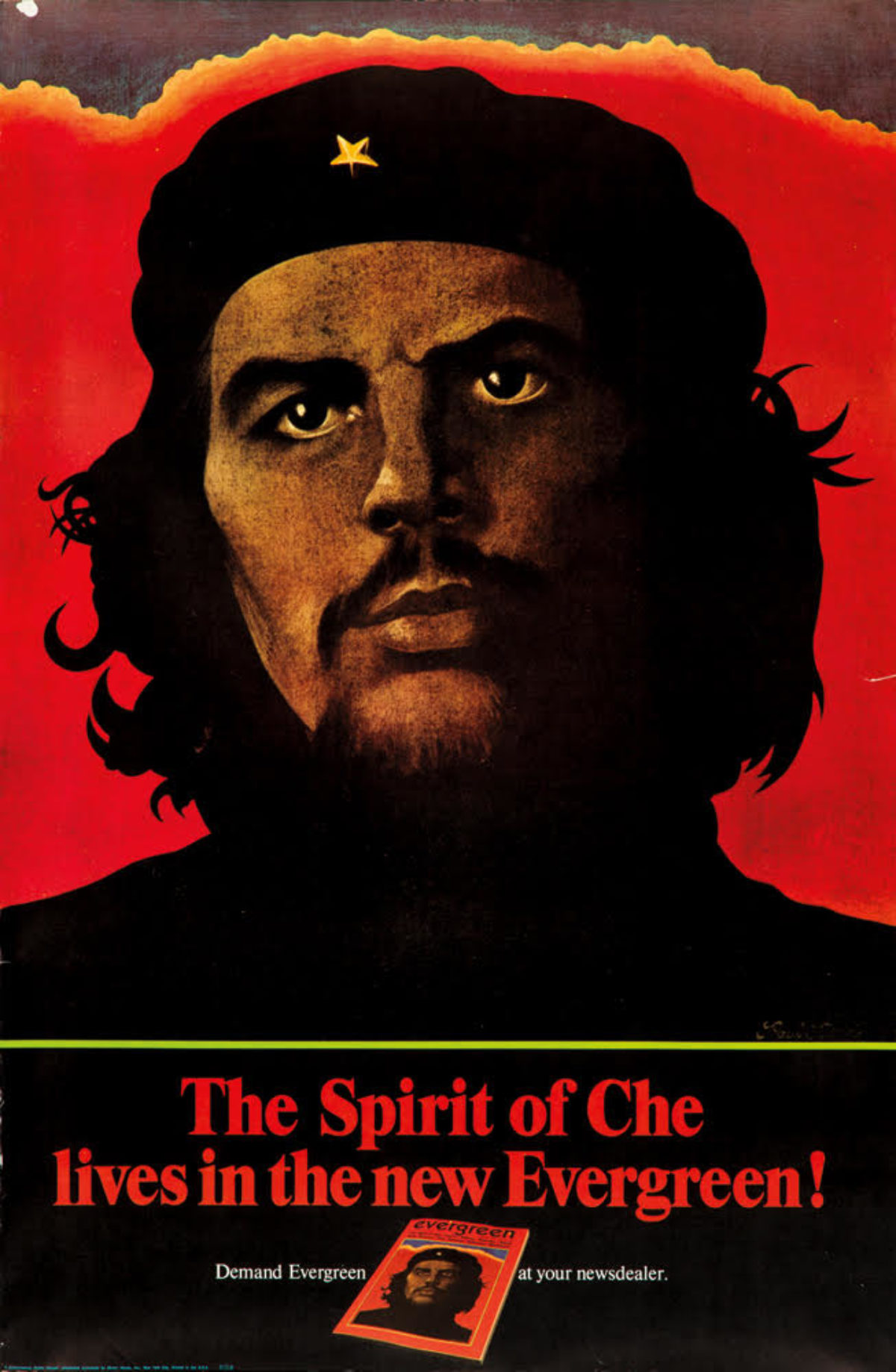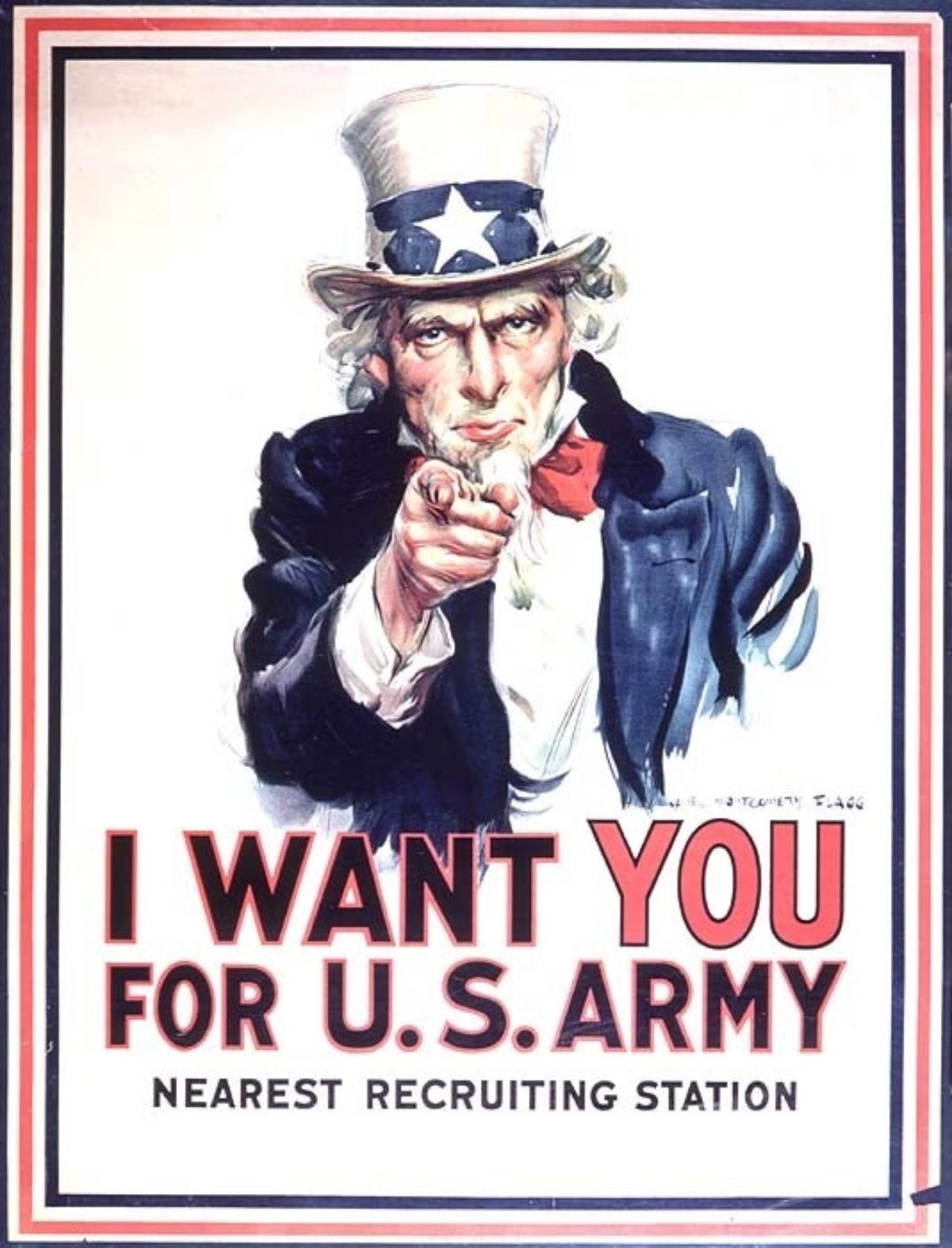
Hot Poster Gossip: Rosie Edition
We’ve all seen this poster. Her image is as ubiquitous as Uncle Sam or Ronald McDonald. But almost everyone misidentifies her. In this month’s edition of Hot Poster Gossip, we explore the truth behind this iconic poster.
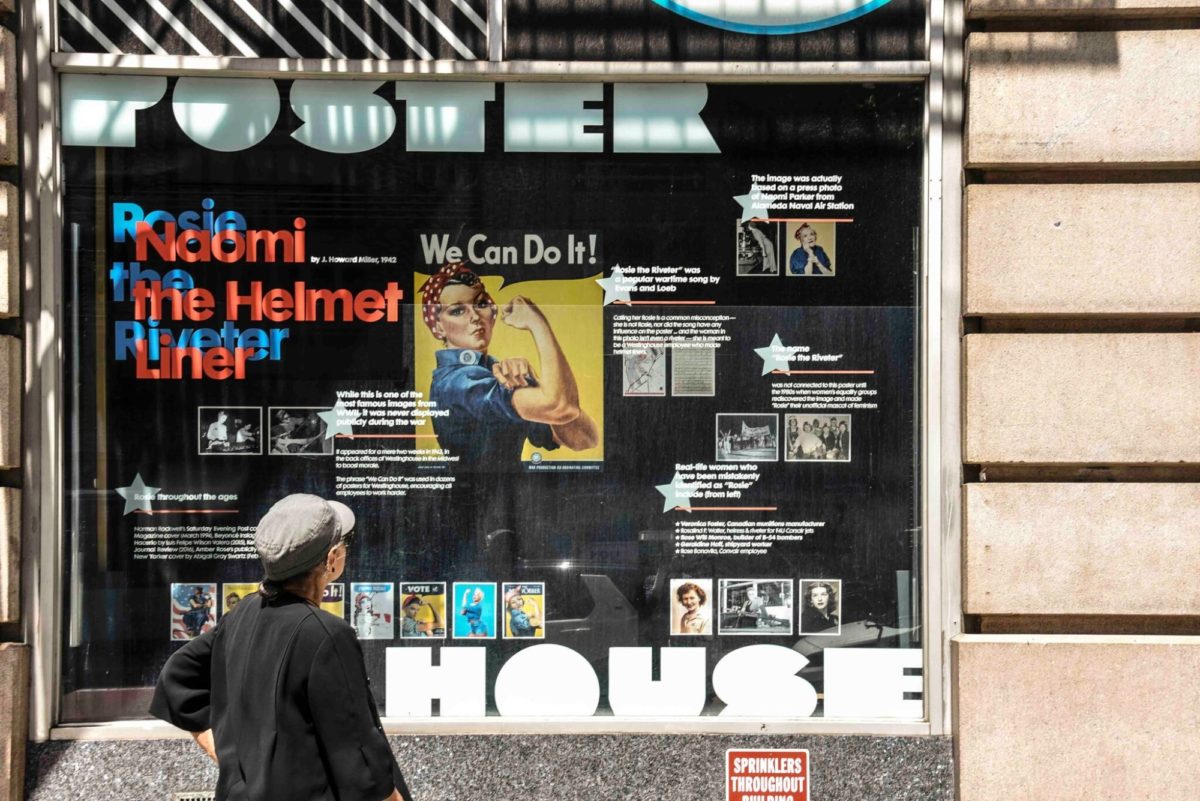
Installation in Poster House’s 23rd Street window
In February 1943, the now-iconic We Can Do It poster appeared in the back offices of a few Westinghouse factories in the Midwest. It was part of a larger series that the artist J. Howard Miller had been contracted to create for the company as part of an internal push to encourage employees to work harder for the war effort. These posters would rotate in two-week cycles over the course of the year, each one focusing on a way in which you, the Westinghouse employee, were part of a team dedicated to the company line.
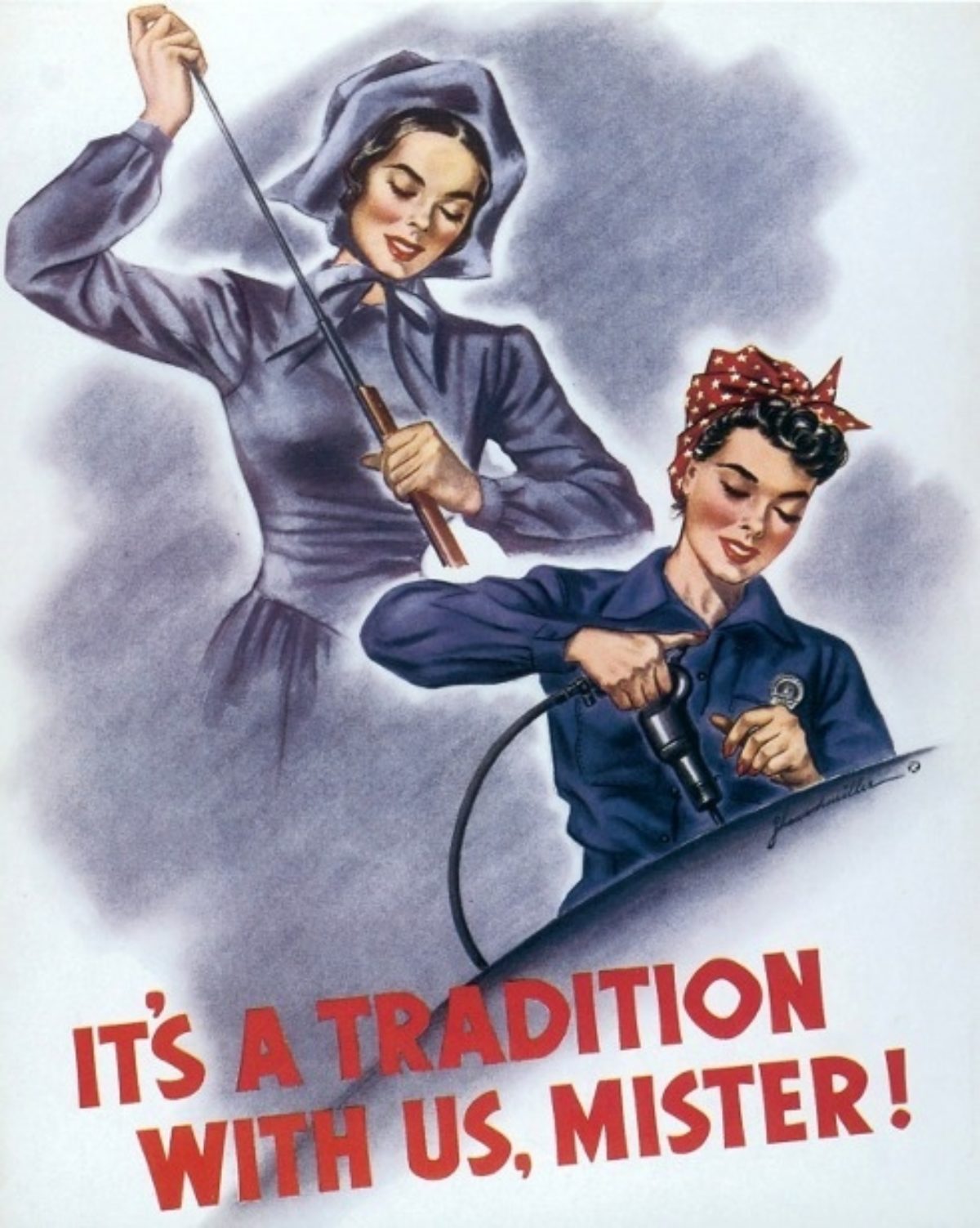
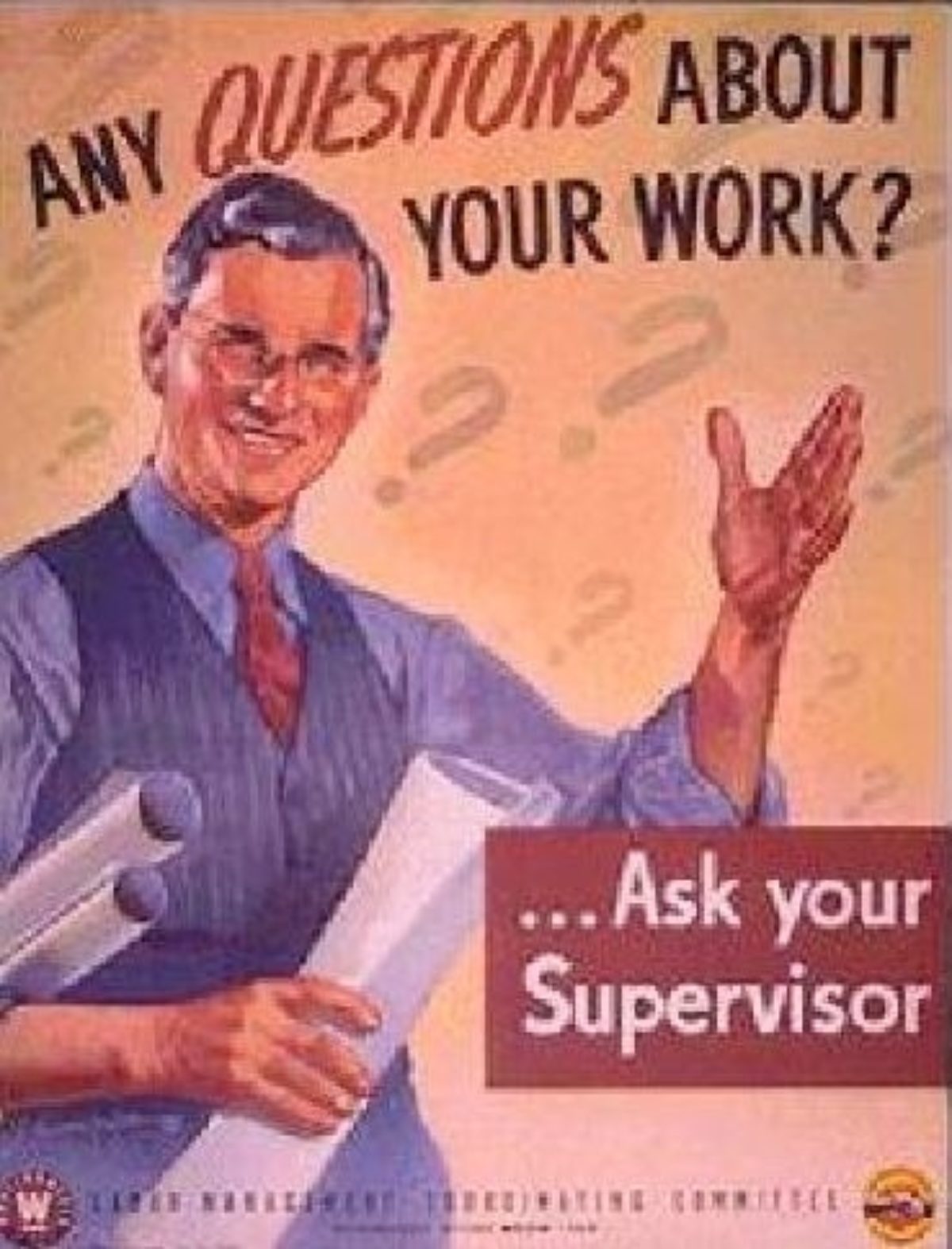
Two other posters by Miller
(image c/o American Gallery)
Meanwhile, just a few months earlier, composers John Jacob Loeb and Redd Evans released a popular song entitled “Rosie the Riveter.” It was covered by numerous artists spanning a variety of genres, and focused on an industrious female worker giving her all.
If you’re interested, here are the original lyrics:
While other girls attend their fav’rite cocktail bar Sipping Martinis, munching caviar There’s a girl who’s really putting them to shame Rosie is her name
All the day long whether rain or shine She’s a part of the assembly line She’s making history, working for victory Rosie the Riveter
Keeps a sharp lookout for sabotage Sitting up there on the fuselage That little frail can do more than a male will do Rosie the Riveter
Rosie’s got a boyfriend, Charlie Charlie, he’s a Marine Rosie is protecting Charlie Working overtime on the riveting machine When they gave her a production “E” She was as proud as a girl could be There’s something true about Red, white, and blue about Rosie the Riveter
Everyone stops to admire the scene Rosie at work on the B-Nineteen She’s never twittery, nervous or jittery Rosie the Riveter
What if she’s smeared full of oil and grease Doing her bit for the old Lendlease She keeps the gang around They love to hang around Rosie the Riveter
Rosie buys a lot of war bonds That girl really has sense Wishes she could purchase more bonds Putting all her cash into national defense Senator Jones who is “in the know” Shouted these words on the radio Berlin will hear about Moscow will cheer about Rosie the Riveter!
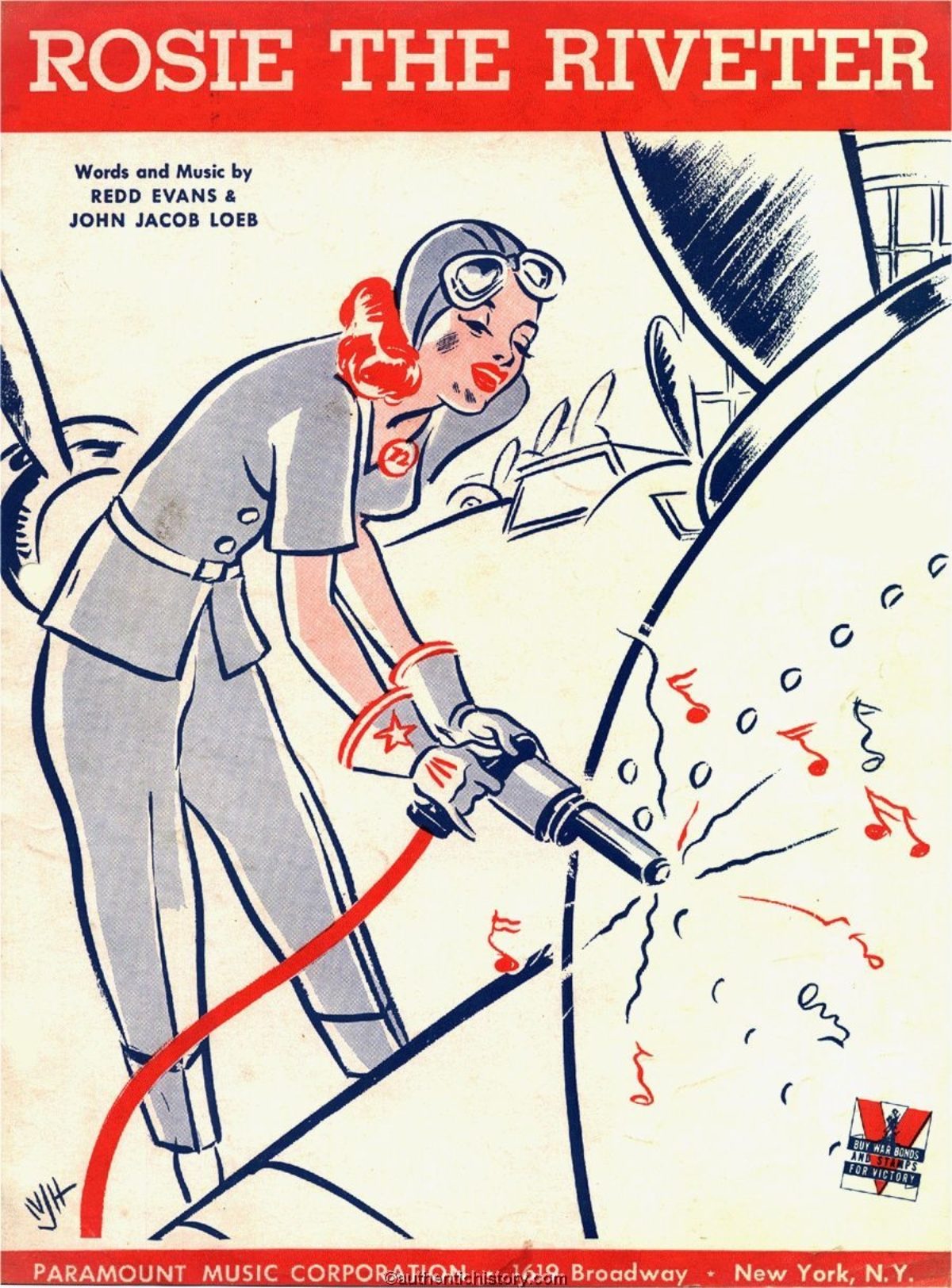
Original songsheet cover
(image c/o Wikipedia)
Legend has it that this Rosie was based in part on Rosie Bonavita, a real-life riveter for Convair, as well as Veronica Foster, the Canadian woman who posed for a series of photographs put out by the National Film Board meant to emphasize that a female worker could still maintain high levels of femininity.
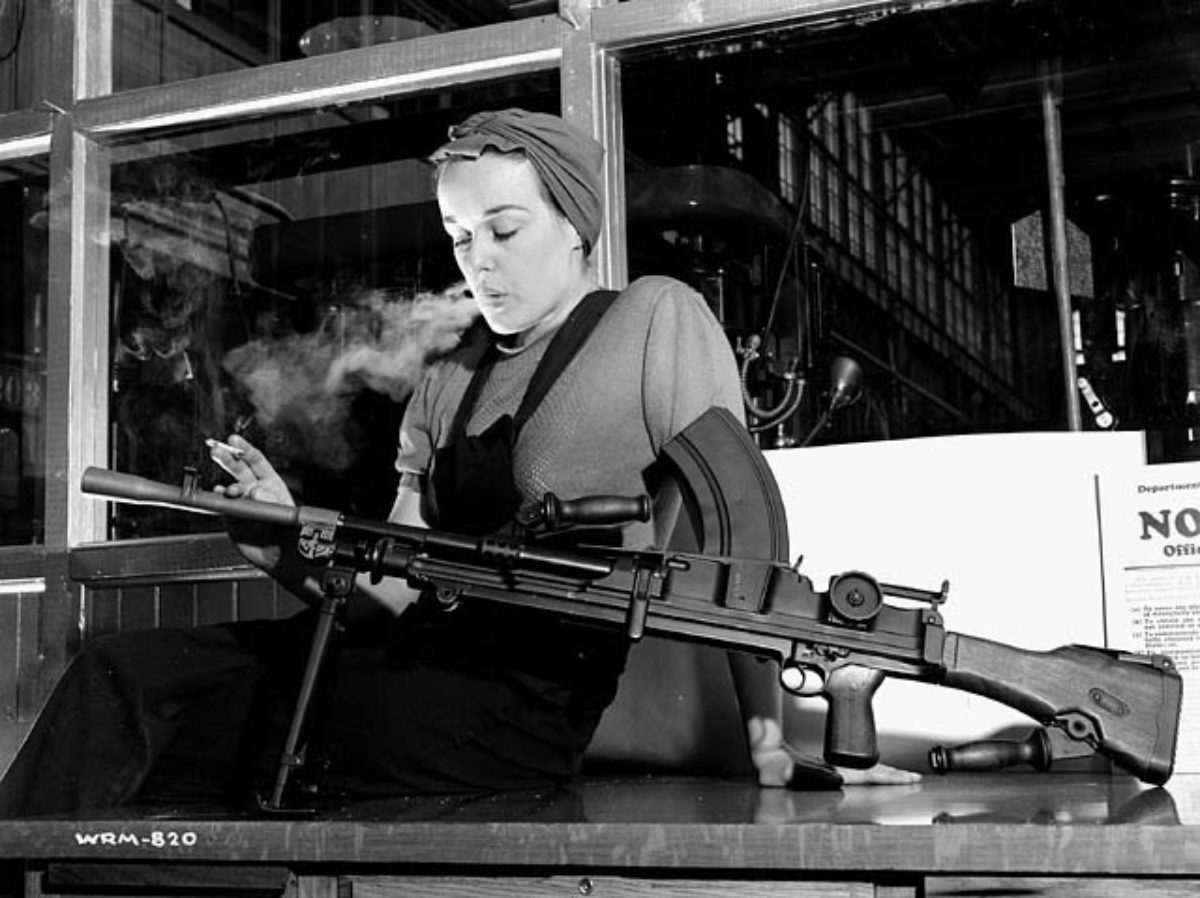
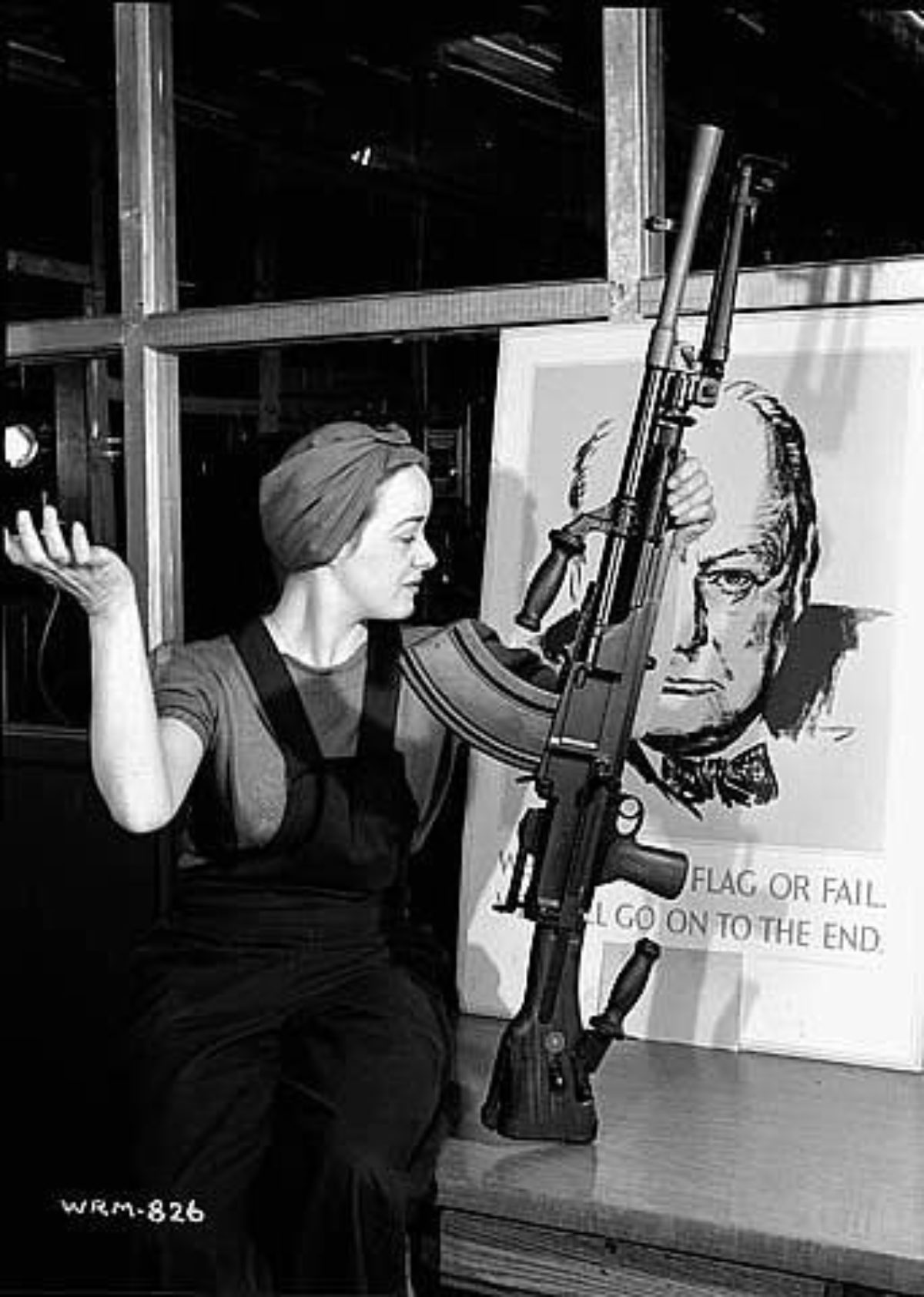
Two images from the Veronica Foster series
(Images c/o Unwritten Histories)
Not long after “Rosie the Riveter” became a national hit, Norman Rockwell produced a cover for the May 29, 1943 issue of the Saturday Evening Post. On it we see a muscular female riveter enjoying a sandwich, the lunchbox in her lap stamped with the name Rosie, while a copy of Mein Kampf rests underfoot. She was the embodiment of the Evans and Loeb song, a reference almost everyone in America would have understood.
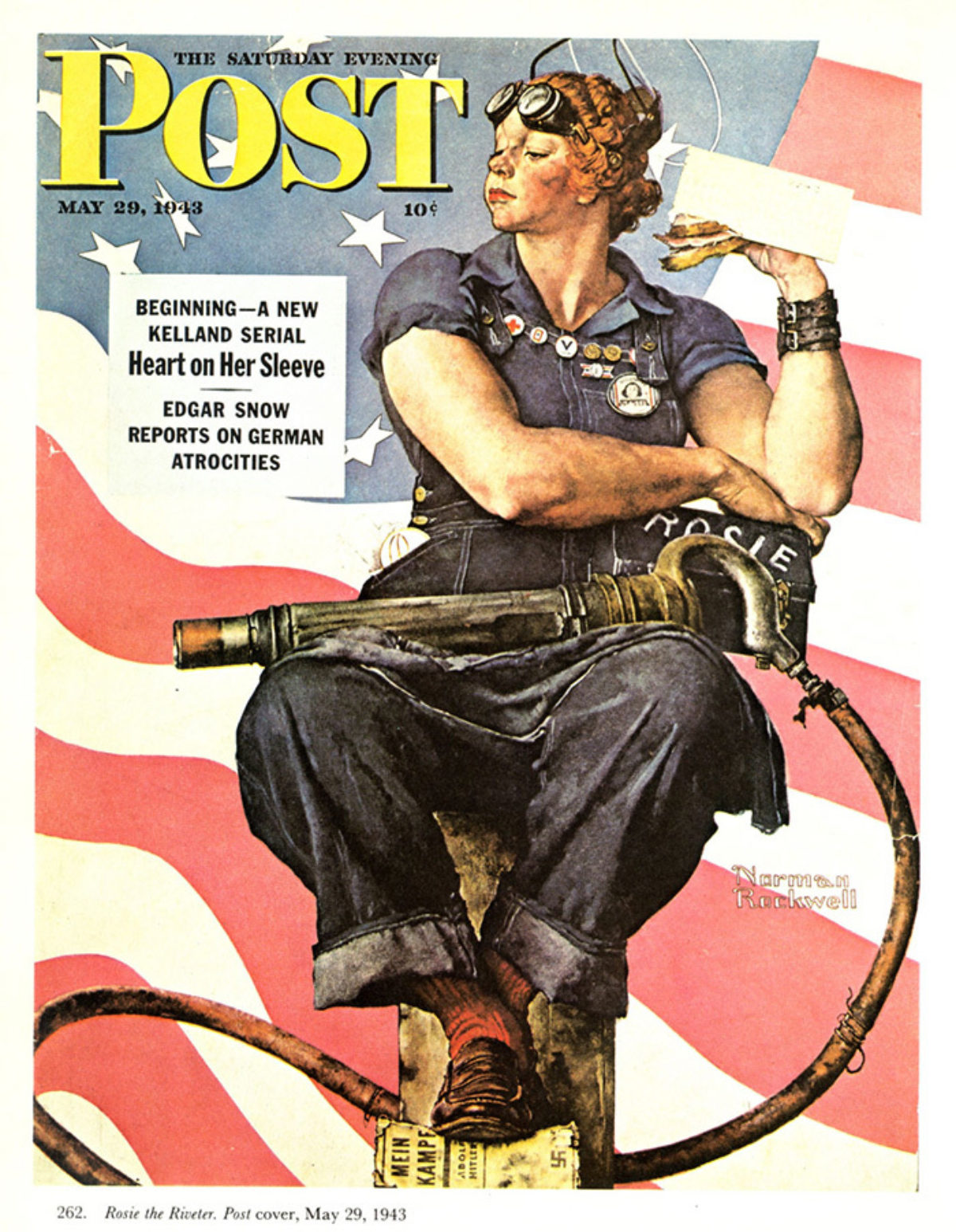
Cover of the Saturday Evening Post by Norman Rockwell
(Image c/o the Norman Rockwell Museum)
Flash forward to the 1980s. After decades of obscurity, someone uncovers Miller’s original poster. Looking at it through the contemporary lens of female empowerment, the image is reappropriated as a feminist mascot. A few years later, Smithsonian magazine puts the poster on its cover, incorrectly labeling it Rosie the Riveter. She goes viral and hasn’t vanished from the cultural zeitgeist since.
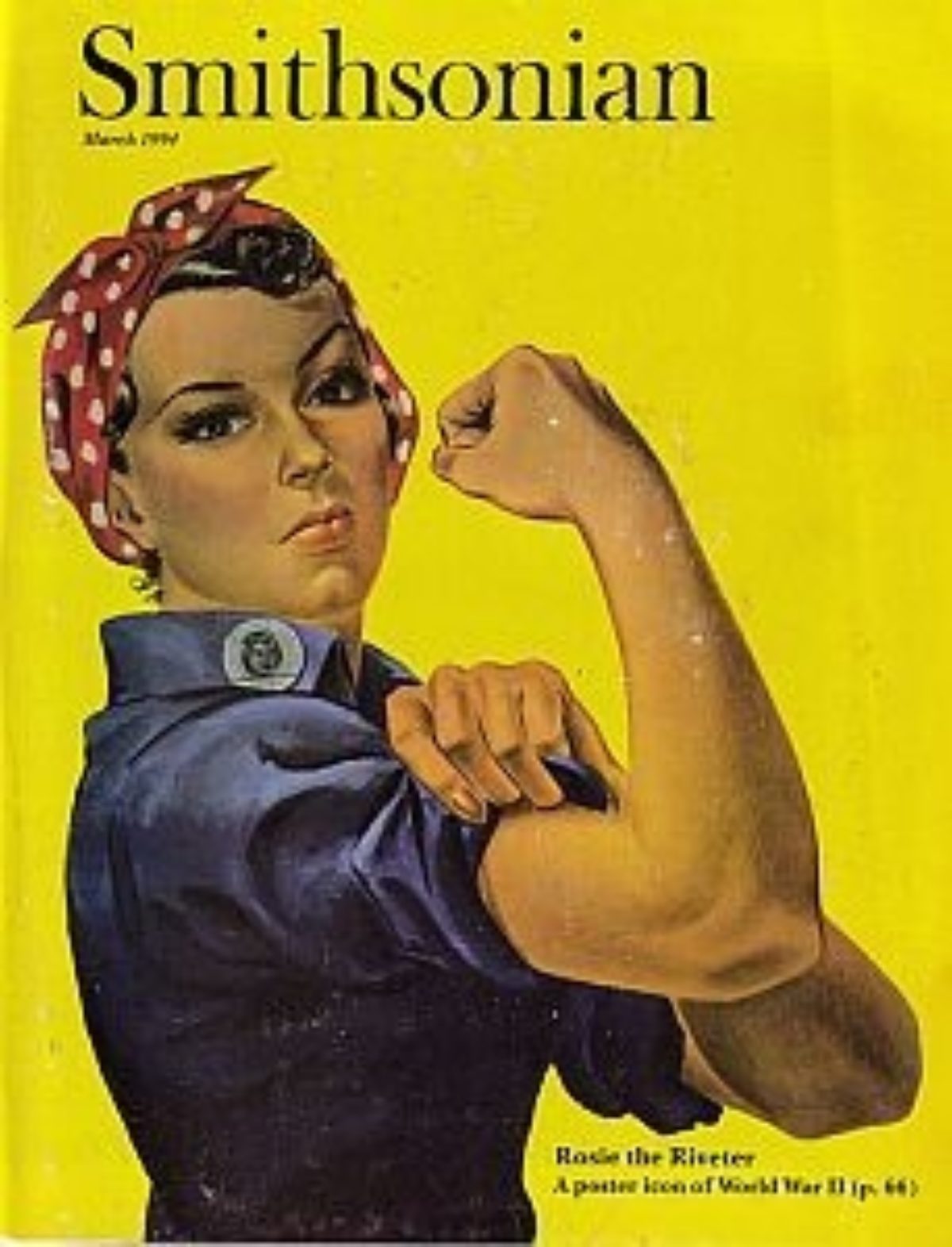
Smithsonian cover
(Image c/o The Smithsonian)
Over the years, many women have been incorrectly identified as the model for this poster. There was Geraldine Hoff, a shipyard worker, who mistakenly thought the figure looked like her when she saw it on the Smithsonian cover. There was also Rose Mill Monroe who worked on B-54 bombers at the Ford Motor Company. In 1944, Walter Pidgeon filmed one of his many propaganda shorts at the factory and, upon hearing there was a woman named Rosie who worked there, thought it would be a fun tribute to the song to include her in the footage. There was even the heiress Rosalind P. Walter who built F4U Corsair jets by night. But none of these women are the muse behind the image. Instead, Miller saw a press photo of Naomi Parker working at Alameda Naval Air Station. Striking and lovely, he made her immortal.
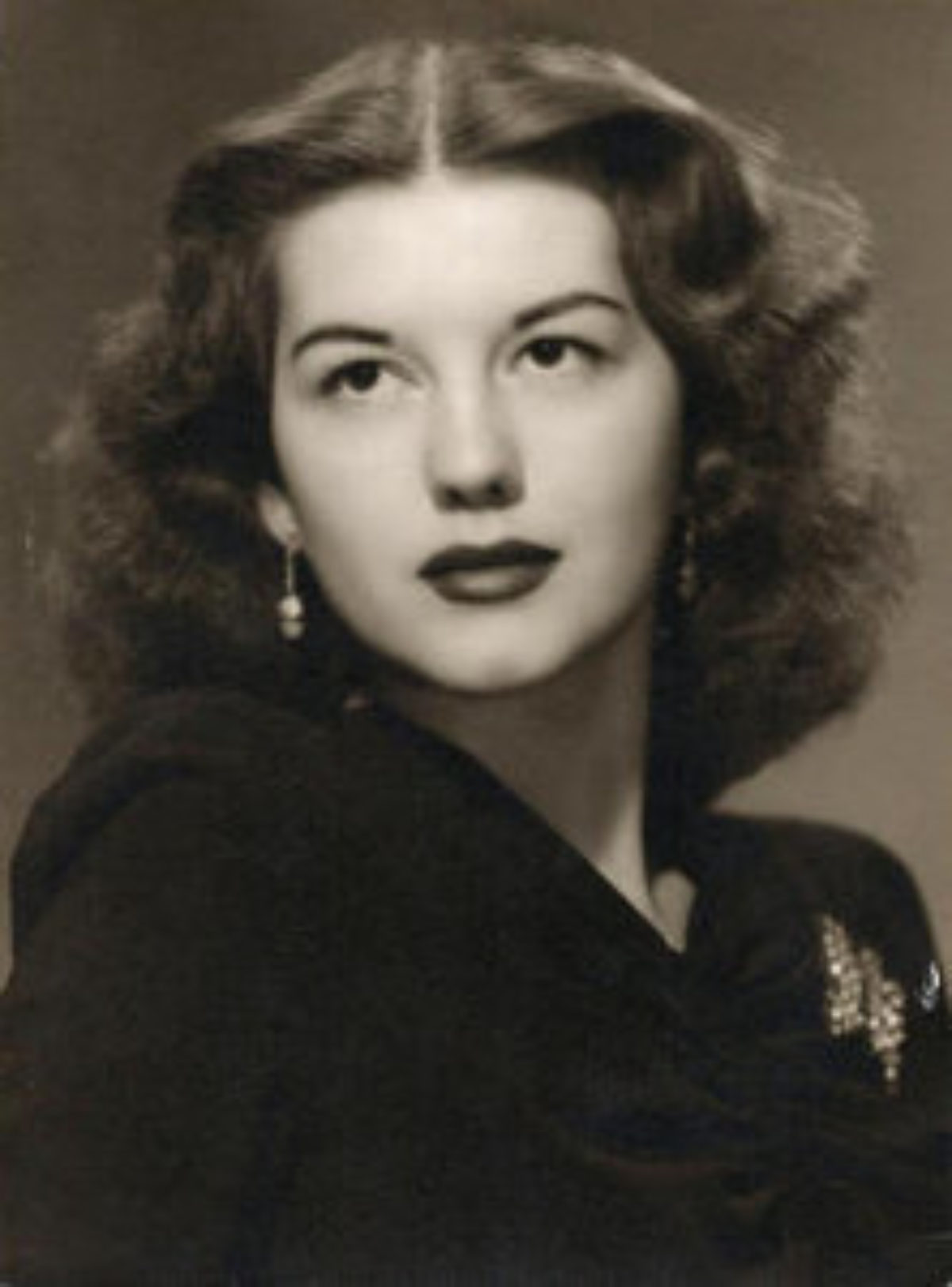
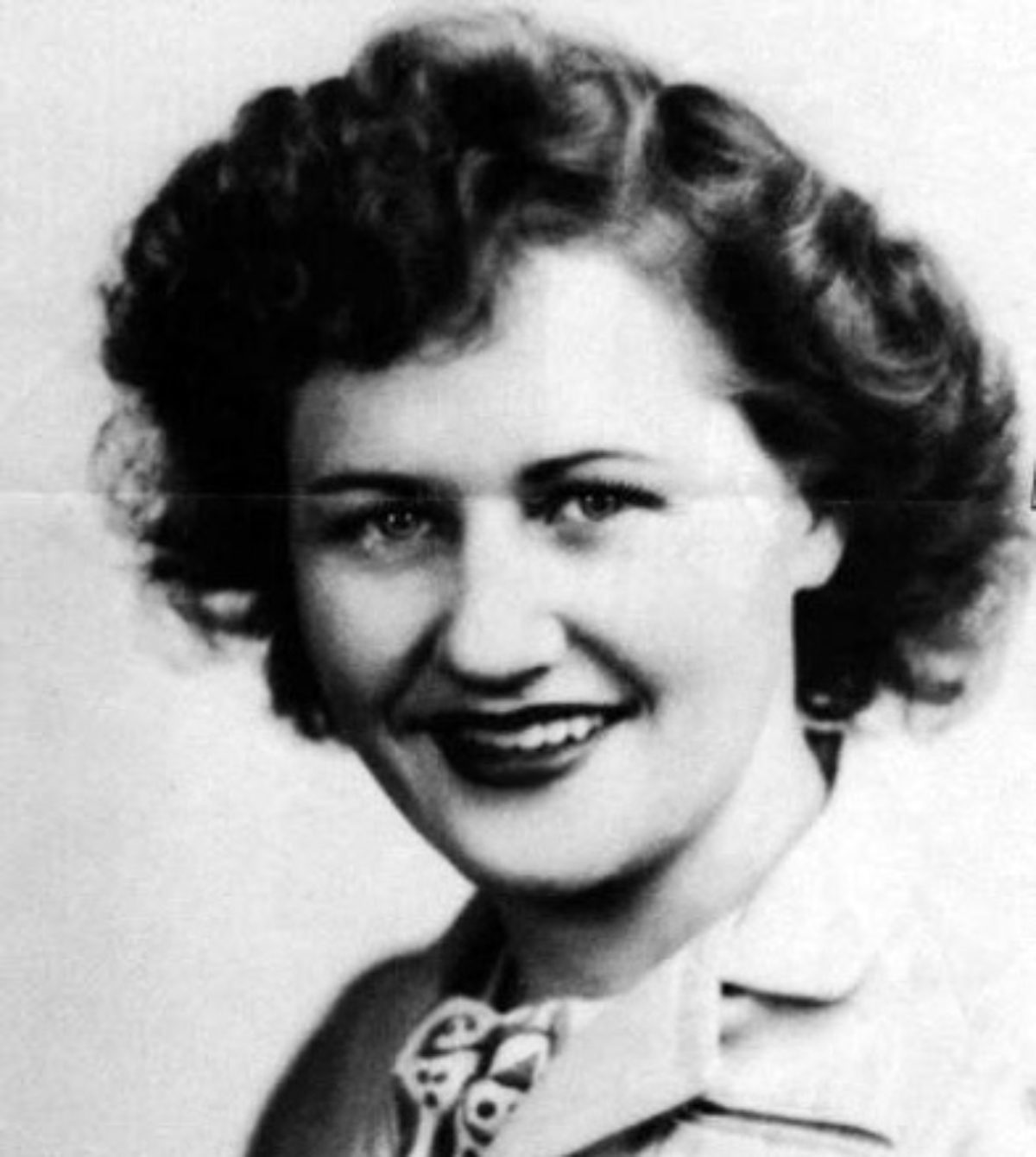
Right: Rose Will Monroe
Left: Geraldine Hoff
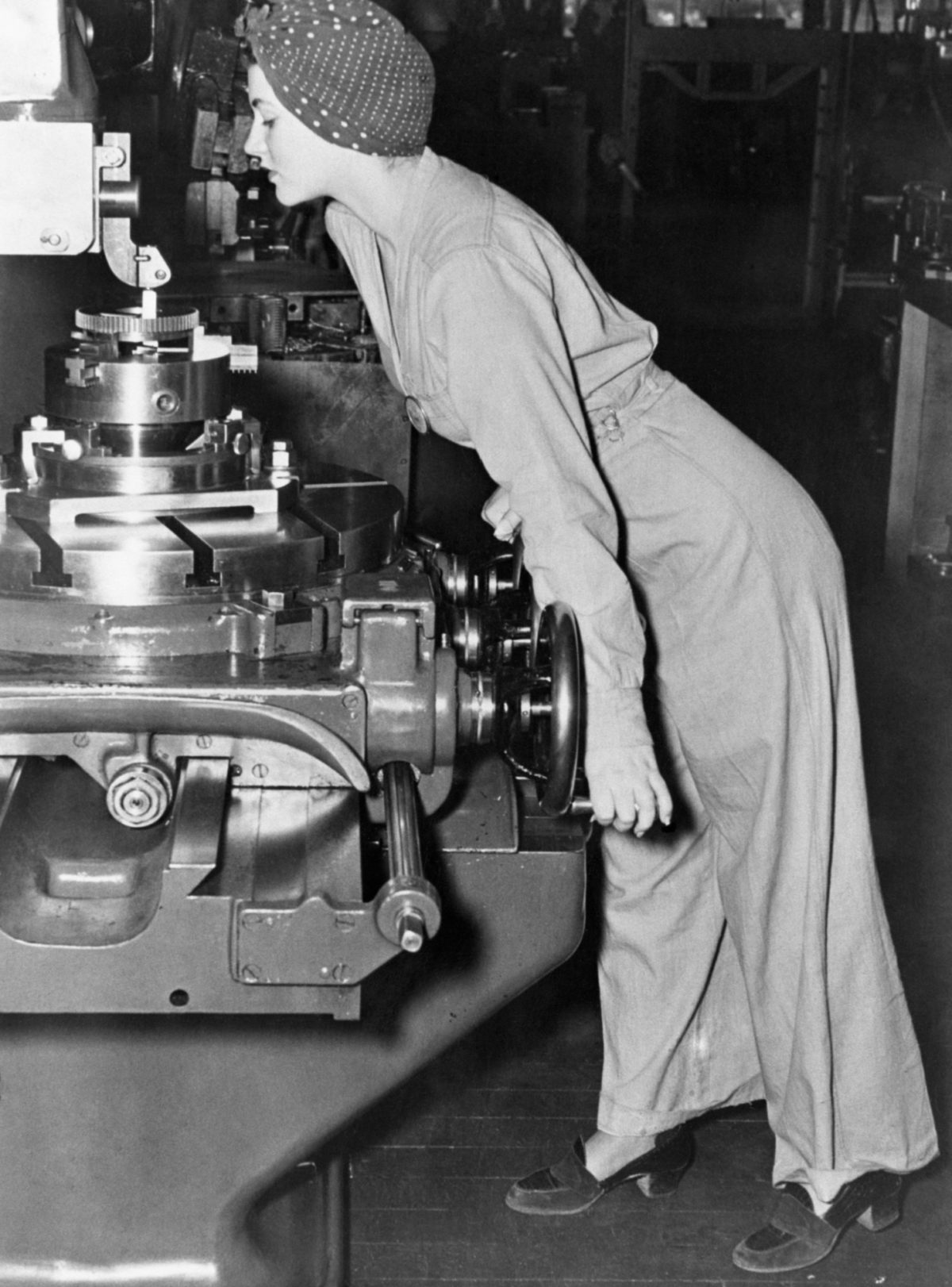

Naomi Parker, then and now
(Images c/o the New York Times & People)
Looking at her, though, the woman in the poster isn’t a riveter. She’s wearing a Westinghouse factory worker’s uniform, specifically that of someone who was molding plastic helmet liners during the war. She also shouldn’t be seen as an image calling women into the workforce, but instead a piece of internal propaganda to help the entire team – male and female – work together for the betterment of the company. The “we” isn’t women – it’s Westinghouse.


